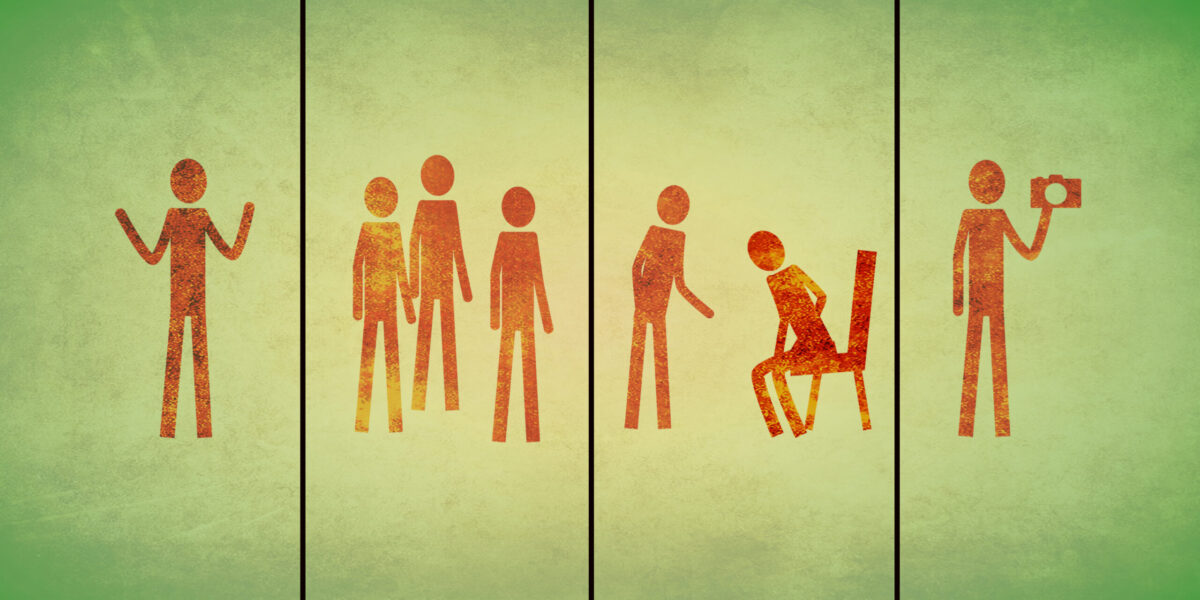"So faith by itself, if it has no works, is dead. But someone will say, ‘You have faith and I have works.’ Show me your faith apart from your works, and I by my works will show you my faith."
—James 2:17-18
"The people I know love me are the ones who have my back on a daily basis. The ones who support me and show me love," she said from the stage of the event I was attending. This woman knew what James knew, that faith without action is no faith at all. She, a Muslim woman of color, reminded those of us who were not, that our actions speak louder than our words. That showing up in the messy situations was the most important thing we could do.
When we do this, we practice being Christ here on earth. Christ often stood up for those who were marginalized, and intervened when they were victimized. We, too, are called to follow this example by living out our faith, and defending those who are in need of our help.
Acting out our faith in moments of harassment can be scary. We will be better prepared if we can pause and practice these skills in a safe space where we can get honest feedback from our friends. The next section lets you practice responding, and gives you real-world scenarios to think through what kind of response would have been helpful in the particular situation.
Examples of the five "Ds"
Standing in line at a local grocery store, a woman (1) in hijab, a Muslim head covering, pulls her cart into line. A woman (2) brings her cart up behind the woman and bumps her cart. Woman 1 pulls her cart up, but Woman 2 bumps the cart again. Woman 2 begins to say, "This isn’t your country. Go back to the terrorists. We don’t dress like that in America."
Direct
You are standing in the next aisle when you hear someone raising her voice. You realize the woman is being harassed because she is dressed in hijab. You assess the situation: There are many people present, Woman 2 is not physically intimidating, and you feel safe. You leave your cart and go to the scene. You look Woman 2 in the eyes, and clearly and calmly say, "Do not speak to her that way. You need to stop now." You turn your attention to Woman 1 and stand beside her, giving no further attention to her harasser.
Distract
You are uncomfortable directly addressing the situation. You pull your cart out of line and go to the scene. "Hello," you say to Woman 1. "My name is Susan. If it’s all right with you, I’d like to stay and talk until you’re through the line. What’s your name?" During this exchange, you are paying no attention to Woman 2 even though she continues to yell. Your focus stays exclusively on Woman 1. You are able to position yourself between the two carts, blocking the attacker. You stay with Woman 1 and walk her to her car before returning to your cart.
Delay
The scene takes place at the other end of the grocery store from where you are standing. By the time you arrive, Woman 2 has left the scene. You go to Woman 1 and say, "I heard what happened. Are you all right? What can I do to help you?" Woman 1 asks you to walk her to her car. You offer her your phone number in case she decides to report the incident.
Delegate
You overhear someone yelling and realize that someone is being harassed in another line. You turn to the cashier and say, "Someone is being harassed. Call the manager immediately." Meanwhile, you ask another shopper to go with you to support Woman 1.
Document
You notice harassment is taking place and take out your phone, recording the interaction. After the incident is over, you meet Woman 1 and tell her that you have documentation of what occurred. You exchange e-mail addresses, assuring her you will not post the video to social media. You encourage her to report the incident to the Southern Poverty Law Center.
Small-group discussion
1. What did the bystanders do well?
2. What would you have done differently?
3. How did you feel as you read these examples? Empowered? Frightened? Anxious? Hopeful?
4. Below are some documented examples of harassment. We invite you to review them and talk about what you might do to intervene in each situation. Which "D" would you use and why?
• https://themennonite.org/daily-news/mennonite-education-agency-board-responds-hate-call/
• http://www.9news.com/news/local/store-employee-accused-of-using-gay-slur/356160991
End-of-training discussion questions
1. Which of the "Ds" is the most comfortable reaction for you? Which is the least comfortable?
2. Based on where you live, who is most likely to be the victim of public harassment? Where is that harassment most likely to take place?
3. When have you seen, read about, or experienced public harassment? How did you or others respond? Based on the training, what did bystanders do well and what should they have done differently?
4. How does your faith inform how you plan to intervene for others experiencing harassment? What Scripture will center you as you discern God calling you to intervene for others?
A prayer for bystanders
God, our Rock and our Shield, you have sent us to one another, to be the hands and feet of Christ for the world. When we see anger, hatred and fear, give us the wisdom to act, to speak, and to move. When we are afraid, give us strength. When we feel alone, send others to respond beside us. In all we do and in all we say, help us to stand beside those who face harassment, for these are your beloved. Give us calm and gentle hearts in all we say and do. We ask this all in the name of Jesus, God with us and for us. Amen.







